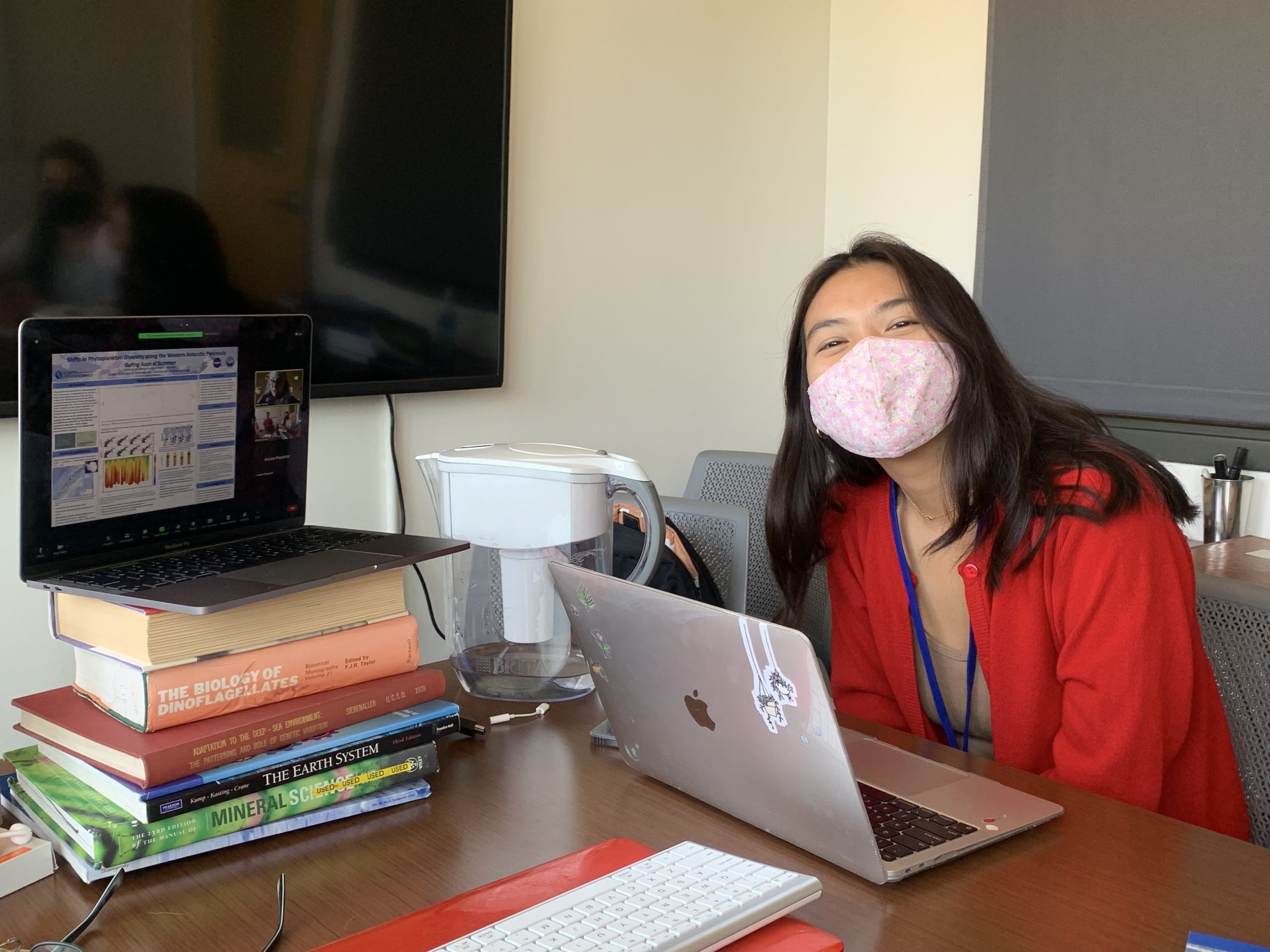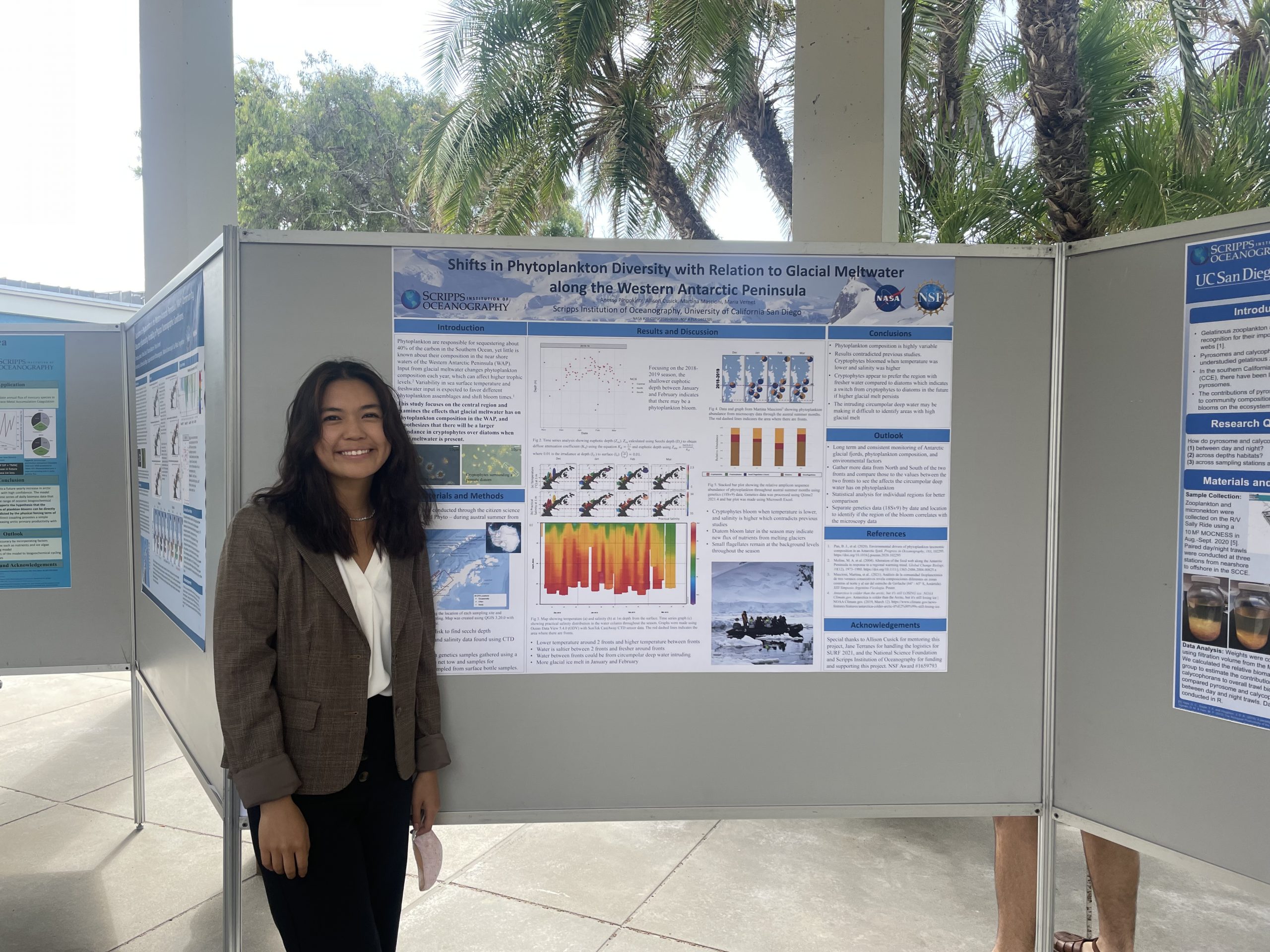Who are you? What are you doing in school?
Hello! My name’s Anesse Pinpokintr. I was born in Southern California, but I travel to Thailand often to visit my extended family. I go to the University of Rochester and I’m majoring in environmental science and minoring in epidemiology. I’m currently doing independent research on methane production in the water column of oxic lakes and planning on turning this into my senior thesis.

Why did you do SURF?
I became interested in oceanography through the Climate Change Perspective to Chemical Oceanography course I took at my university, and subsequently found myself drawn to marine biology and biogeochemical cycles. The professor of that course suggested I apply to the SURF program and similar opportunities to explore these interests at a campus with a larger oceanography department. Given that Scripps Institution of Oceanography is one of the best oceanography institutions in the country (and half an hour away from my home), the SURF program was my first choice and I accepted as soon as I got my invitation.

What was your favorite part about SURF, about the FjordPhyto analysis?
One of my favorite parts of the SURF program was the people I met and connections I established. My mentor, Allison Cusick, was amazing to work with and taught me a lot about Antarctica, phytoplankton, and anything else I wanted to learn. I was glad to find that I really enjoyed the day-to-day schedule of being a scientist and the entire long process of research. Also, the program director, Jane Teranes, always made sure that everyone got what they wanted out of the program. If there was a certain topic I was interested in or a person I wanted to meet, there was always someone who would help me achieve this.
The entire process of the FjordPhyto analysis was extremely long and difficult but it was rewarding to see when the results came out. I enjoyed being able to make connections between different variables and phytoplankton trends.
What was a struggle (did you overcome it)?
I started off with very little experience with coding, having only taken an introductory python course before this program, but I was interested in learning how to code. My first struggle was before I even started physically coding: downloading Qiime and DADA2 for R gave me trouble, but I eventually got it after 2 days of troubleshooting. There were several struggles and errors during the entire time we coded but the worst one was probably when I was analyzing genetics data. I initially used R which was mostly successful until the end, where we had to graph the table, and R claimed that there was no information available. I spent a couple of days trying different ways to graph with R but it wasn’t working. Then I switched to using Qiime and got a lot of help and ended up with a taxonomy table, but I was still unable to graph it. As the last resort, I moved the taxonomy table to Excel and graphed it there for the final poster.
What do you hope to do in your academic future?
After undergraduate school, I plan on taking a break from academia to volunteer for different organizations and work in industry for a couple years. I love polar phytoplankton ecology, but I would also like to study phytoplankton in other regions as well. Nothing is set after that, but I would eventually like to attend grad school for my master’s degree. As for my future with FjordPhyto, I plan to keep on working on genetics data and help working on a review paper.

